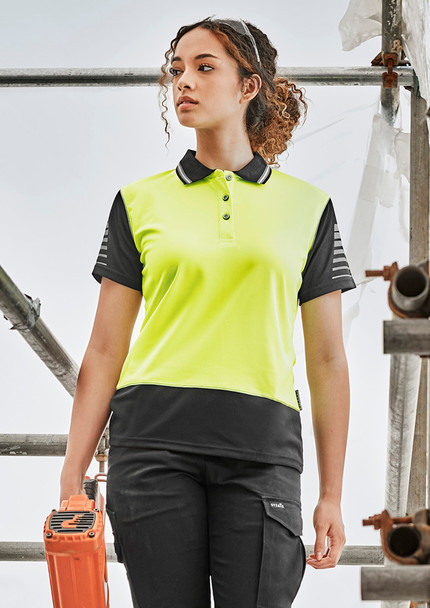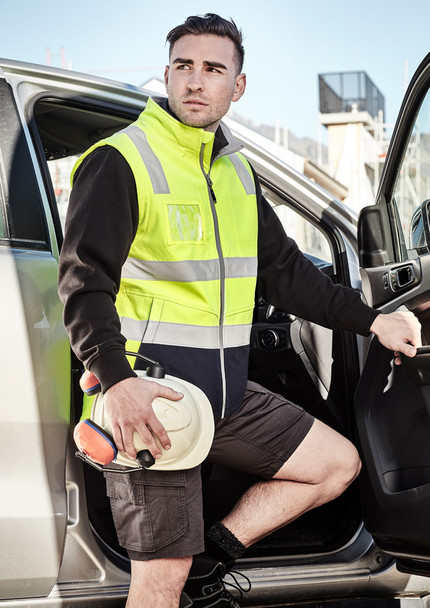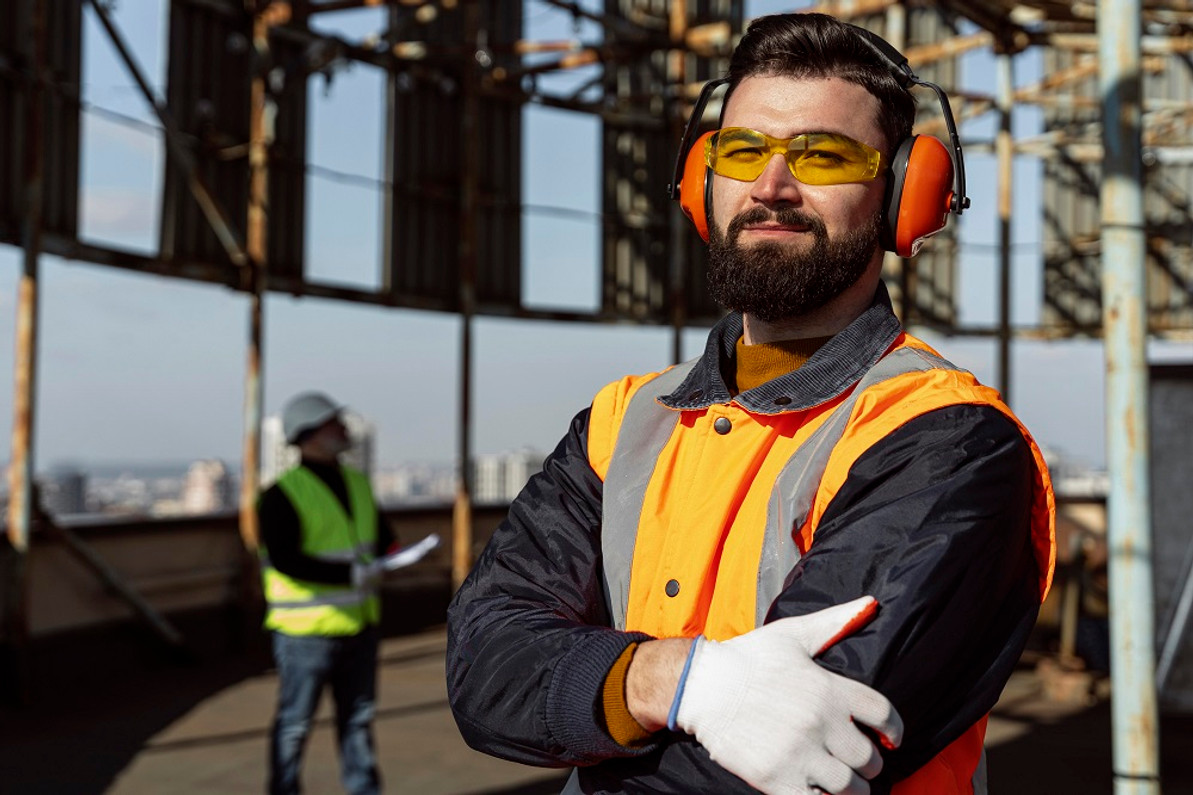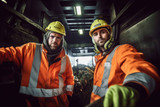The Ultimate Guide to Hi-Vis Workwear: Safety, Style, and Functionality
Understanding the importance of hi-vis workwear
Hi-vis workwear, often referred to as high-visibility clothing, is more than just a fashion statement. It serves a crucial purpose: ensuring the safety of workers in environments where visibility is compromised. This article delves deep into the world of hi-vis workwear, explaining why it's essential and who benefits from it.
Who needs hi-vis workwear?
Hi-vis workwear is not limited to specific industries. From construction sites to emergency responders and manufacturing facilities, anyone working in conditions with low visibility can benefit from this specialized clothing. Whether you're a worker, employer, or safety manager, understanding the significance of hi-vis gear is vital.
Types of Hi-Vis Workwear
Hi-vis vests: A versatile option
Hi-vis vests are the most versatile piece of high-visibility clothing. They are lightweight, comfortable, and easy to wear over your regular work attire. Vests come in various styles, including those with pockets for added utility.
Hi-vis jackets: Protection from the elements
For outdoor workers facing challenging weather conditions, hi-vis jackets are a must. These jackets not only enhance visibility but also provide protection from rain, wind, and cold. Look for options with adjustable features to ensure a snug fit.
Hi-vis pants: Staying safe from top to bottom
Complete your hi-vis ensemble with hi-vis pants. They offer full-body visibility and protection. Depending on your needs, you can choose from different styles, including cargo pants for added functionality.

Why Hi-Vis Workwear Matters
Enhancing visibility in low-light conditions
Hi-vis workwear is designed with fluorescent materials and reflective strips, making it highly visible even in dimly lit environments. This visibility reduces the risk of accidents and keeps workers safe.
Compliance with safety regulations
Many industries have strict safety regulations that require employees to wear hi-vis workwear. Non-compliance can result in fines and legal issues, emphasizing the importance of adhering to these standards.
Reducing accidents and injuries
By wearing hi-vis workwear, employees are less likely to be involved in accidents. The enhanced visibility allows co-workers and machinery operators to spot them quickly, reducing the chances of collisions and injuries.

Selecting the Right Hi-Vis Gear
Assessing your workplace needs
Before purchasing hi-vis workwear, assess your workplace environment. Consider factors such as lighting conditions, weather, and specific safety regulations that apply to your industry.
Choosing the appropriate class of hi-vis clothing
Hi-vis clothing is classified into different classes based on the level of visibility they provide. Understanding these classes and their corresponding requirements will help you make an informed choice.
Sizing and fit considerations
Proper sizing and fit are essential for the effectiveness and comfort of hi-vis workwear. Always consult size charts and consider trying on the clothing before purchasing.
Features to Look for
Reflective materials: How they work
Reflective materials on hi-vis workwear bounce light back to its source, making the wearer visible in low-light conditions. Understanding how these materials function can help you appreciate their significance.
Comfort and breathability
Working in hi-vis gear for extended periods can be challenging. Look for clothing with features like moisture-wicking fabric and ventilation to enhance comfort.
Durability for long-term use
Investing in durable hi-vis workwear ensures it will last longer, providing ongoing safety benefits. Consider the quality of stitching, reinforcements, and materials when making your purchase.
Industries That Rely on Hi-Vis Workwear
Construction and roadwork
In construction and roadwork, where heavy machinery and vehicles are constantly in motion, hi-vis workwear is a lifesaver. It allows workers to be easily seen by equipment operators and other team members, reducing the risk of accidents.
Emergency services
Police officers, firefighters, and paramedics often work in unpredictable and dangerous situations. Hi-vis uniforms make them more visible to the public and help them stand out in emergencies, ensuring quick responses and improved safety.
Manufacturing and warehouses
In manufacturing facilities and warehouses, employees are often surrounded by heavy equipment, shelving, and inventory. Hi-vis workwear keeps them visible, preventing collisions and enhancing overall safety.
Advantages of Hi-Vis Workwear
Improved safety records
Companies that prioritize hi-vis workwear typically experience fewer accidents and injuries, resulting in improved safety records. This not only protects employees but also helps organizations save on insurance costs.
Enhanced professionalism
Wearing hi-vis workwear creates a sense of professionalism and unity among team members. It fosters a strong company image, instilling confidence in clients and customers.
Legal compliance
Meeting safety regulations and standards is crucial to avoid legal troubles. Hi-vis workwear ensures compliance, protecting your business from potential fines and penalties.
Conclusion
In conclusion, hi-vis workwear is not just clothing; it's a vital element in workplace safety. Whether you're working on a construction site, responding to emergencies, or managing a warehouse, hi-vis gear enhances visibility and reduces the risk of accidents and injuries. Prioritizing the safety of your team not only improves your company's reputation but also ensures legal compliance and long-term success.
Remember that safety should always be a top priority. By understanding the types, benefits, and selection criteria for hi-vis workwear, you can make informed choices that protect your employees and your business.
Frequently Asked Questions (FAQs)
1. Is hi-vis workwear necessary for all industries?
While hi-vis workwear is essential for industries with low visibility conditions, it may not be necessary for office-based jobs. Evaluate your workplace environment to determine if hi-vis gear is needed.
2. Can I wash hi-vis workwear like regular clothing?
It's important to follow the care instructions provided by the manufacturer. Typically, hi-vis workwear should be washed separately, using mild detergent, and not exposed to high heat.
3. How often should hi-vis workwear be replaced?
Regularly inspect your hi-vis gear for signs of wear and tear. If the reflective materials are faded or damaged, it's time for replacement. As a general guideline, consider replacing hi-vis workwear every two years.
4. Are there different classes of hi-vis workwear?
Yes, hi-vis clothing is categorized into different classes based on the level of visibility they provide. Higher classes offer more visibility and are typically required for riskier environments.
5. Can I order customized hi-vis workwear for my team?
Many suppliers offer customization options, allowing you to add logos and branding to hi-vis clothing. This is a great way to promote your company's image and enhance professionalism among your employees.
Recent Posts
-
Eco-Friendly Work Clothes Shops: Can Safety and Sustainability Go Hand-in-Hand?
In today’s evolving work environment, the need for durable, functional, and environmentally re …11th Jun 2025 -
Which Hi Vis Workwear Colour Works Best: Yellow, Orange, or Green?
When it comes to staying safe on the job, wearing the right hi vis workwear is just as important as …11th Jun 2025 -
How do pockets in the safety workwear enhance functionality and safety?
In the world of occupational safety, safety jackets, and vests play a crucial role. The primary purp …13th Jul 2024




